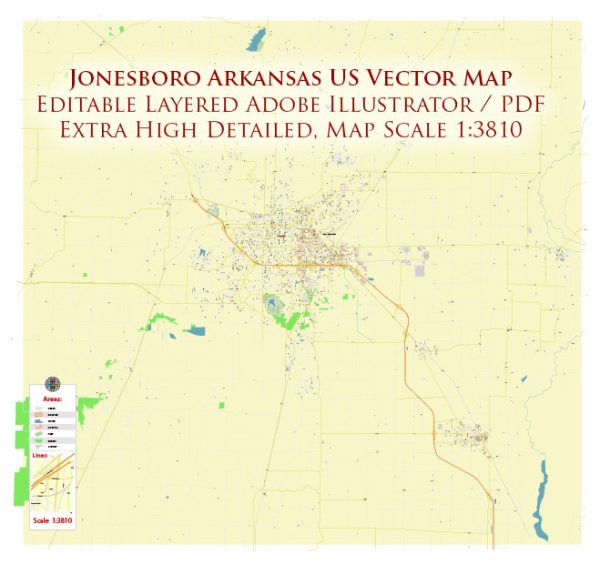Jonesboro, Arkansas, has a rich history of urban development that reflects the broader trends of settlement and growth in the United States. While it might not be as well-known as some larger cities, Jonesboro has played a significant role in the development of the region. Here’s a brief overview of the city’s history:
- Early Settlement and Foundation:
- Jonesboro was founded in 1859 on a site that was originally inhabited by Native American tribes. The city’s location near the St. Francis River made it a strategic point for trade and transportation.
- The city was named after State Senator William A. Jones and was established as the county seat of Craighead County.
- Civil War and Reconstruction:
- During the Civil War, Jonesboro gained historical significance as the site of the Battle of Jonesboro in 1863. The city was a key transportation hub for both the Union and Confederate armies.
- After the war, Jonesboro, like many Southern cities, faced the challenges of Reconstruction. The economy shifted from agriculture to other industries, and the city began to rebuild.
- Railroad Expansion:
- The late 19th century saw the expansion of railroads, and Jonesboro benefited from this development. The arrival of the St. Louis and Iron Mountain Railroad in the 1880s facilitated transportation and contributed to the city’s economic growth.
- Agriculture and Industry:
- Jonesboro’s economy continued to evolve, with agriculture, particularly cotton farming, playing a vital role. The city also saw the growth of industries like timber and manufacturing.
- The diversification of the economy contributed to the city’s resilience during economic fluctuations.
- 20th Century Growth:
- In the 20th century, Jonesboro experienced significant population growth and urban development. The city became a regional center for education, healthcare, and commerce.
- Arkansas State University, established in 1909 as the First District Agricultural School, has played a crucial role in the city’s growth and continues to be a major influence.
- Modern Urban Development:
- Jonesboro has continued to grow and develop in the 21st century. The city has seen expansion in residential areas, commercial zones, and recreational facilities.
- Infrastructure development, including roadways and utilities, has been a focus to accommodate the growing population and enhance connectivity.
- Cultural and Community Development:
- Jonesboro has worked to preserve its historical heritage through the restoration of historic buildings and the establishment of museums.
- The city’s cultural scene has also flourished, with events, festivals, and community initiatives contributing to a vibrant local culture.
Jonesboro’s history reflects the broader trends of Southern urban development, with phases of economic reliance on agriculture, adaptation to industrial changes, and a focus on education and community development. The city continues to evolve, balancing its historical roots with the demands of a modern, growing community.


 Author: Kirill Shrayber, Ph.D.
Author: Kirill Shrayber, Ph.D.